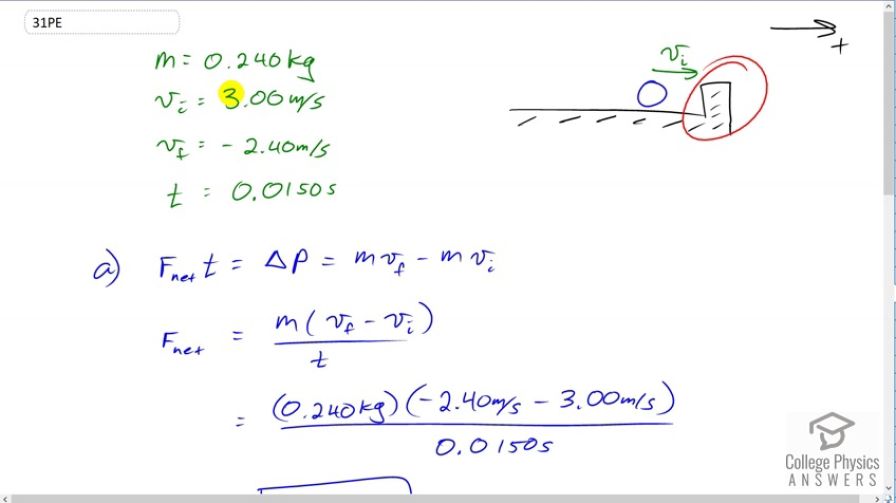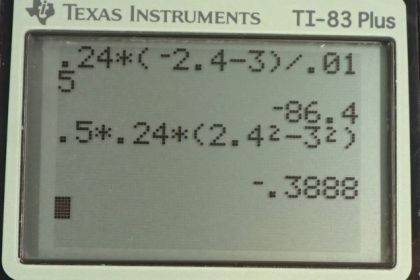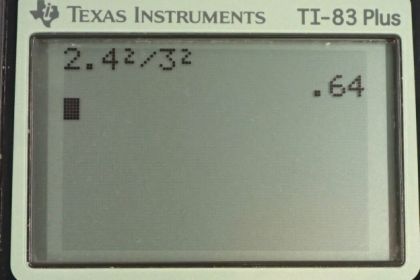Question
A 0.240-kg billiard ball that is moving at 3.00 m/s strikes the bumper of a pool table and bounces straight back at 2.40 m/s (80% of its original speed). The collision lasts 0.0150 s. (a) Calculate the average force exerted on the ball by the bumper. (b) How much kinetic energy in joules is lost during the collision? (c) What percent of the original energy is left?
Final Answer
a)
b)
c)
Solution video
OpenStax College Physics, Chapter 8, Problem 31 (Problems & Exercises)

vote with a rating of
votes with an average rating of
.
Calculator Screenshots
Video Transcript
This is College Physics Answers with Shaun Dychko. This 0.24 kilogram billiard ball collides with the side of the pool table and has an initial velocity of three meters per second which we'll take positive to the right. It bounces back with velocity of negative 2.4 meters per second. The border of the billiard table applies a force on it for a duration of 0.015 seconds. So part A asks us to find the force that the pool table applies on the ball. So the impulse is the force that it applies multiplied by time. The force that it applies will be the net force on the ball when it hits because there is going to be only the one force. So that F net times time is going to equal the change in momentum which is the mass times the final velocity of the ball minus the mass times its initial velocity. We can solve for F net by dividing both sides by t and we get that the force applied by the pool table on the ball is the mass of the ball times v f minus v i where I factored out the common factor m there, all divided by t. So that's 0.24 kilograms times negative 2.4 meters per second final velocity, minus the three meters per second initial velocity, divided by the 0.015 seconds that the force is applied, which is negative 86.4 newtons. The negative sign means the force is pointing in the negative direction, opposite to the initially positive velocity. The kinetic energy lost, well we have the change in kinetic energy will be the final kinetic minus the initial kinetic energy. So that's one half m v f squared minus one half m v i squared. The one half m is the common factor that can be factored out. So we have one half m times v f squared minus v i squared. That's one half times 0.24 kilograms times negative 2.4 meters per second squared, minus three squared which gives negative 0.389 joules. So 0.389 joules of energy are lost and it's turned into some other form, probably heat, maybe a bit of sound. The percent of the initial kinetic energy that remains after the collision is going to be the ratio of the two kinetic energies multiplied by one hundred percent. So that's one half m v final squared minus one half m v initial squared. The one half m's cancel and so we have the ratio of the squares of the velocities is going to give us the ratio of the kinetic energies. So that's negative 2.4 meters per second squared divided by three meters per second squared, times one hundred percent, gives 64.0 percent of the kinetic energy remains after the collision.

